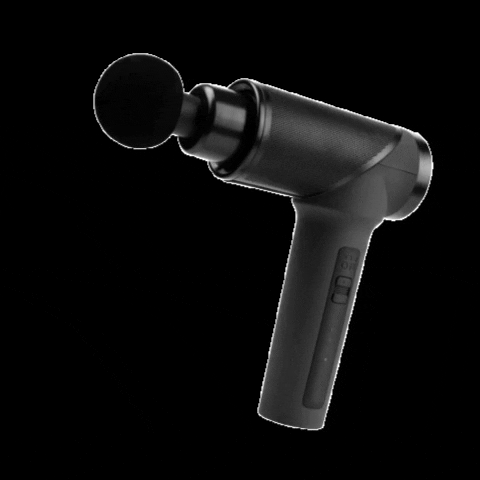Are You Optimizing Your Massage Gun?

This is a 2:30-minute read using 18 sources & a smidge of personal experience
By now, you’ve probably decided if you’re a "massage gun person" or not. Invented in 2016 by a chiropractor recovering from a motorcycle accident, massage guns peaked in 2019 but going into 2023 they still topped popular guides “fitness recovery tools”. The fact that massage guns have stayed popular for several years indicates a lot of people feel benefits from them to relieve muscle aches. However, getting concrete examples of when, where, and how to get the most benefits from massage guns seem to range all over the place. Because massage guns are a relatively new item on the market, there is little to no formal research on how and why they seem to work. Whether you are a massage gun enthusiast, have one but rarely use it, or a skeptic, here are some things to know about the popular but expensive gadget.
What We Know: Percussion (like high-power jacuzzi jets or massage chairs) feels really good on targeted achy muscles or trigger points. It can at least temporarily relieve aches, and knots, and get into trigger points differently than manual bodyworkThe advantage of percussion is that it moves tissue in a different way. It allows the user to get into specific trigger points that are hard to accessIt will bring better circulation to the area, (but so will a heat pad, bath, or a walk)
What We Don't Know: Why/How percussion seems to work (although there are working theories)If regular use improves muscle performance/capacity it mitigates or delays feeling sore musclesIf it increases muscle flexibility or joint mobility. If percussion/vibration therapy neurologically changes pain perception (it might!) It
Definitely Doesn't: Alleviate pain for nerve or tendon issues (don't use it for sciatica or on your "IT Band")Dissipate Lactic Acid: The "lactic acid theory" that it causes sore muscles has been phased out by new research.
Massage Gun Tips: The Angle Matters: Taking the gun perpendicular to the trigger point will create high-impact percussion, but holding it sideways will create a vibration instead. If perpendicular feels too sensitive, try holding it sideways to the trigger point. (I promise, this is not a cover article for a different type of vibrator, we're only talking about spinal erectors here.)
Massage Gun Speeds: For most situations, the lowest speed works. What's not intuitive is that sometimes higher speeds are gentler than the low-speed setting. A high speed isn't higher force, just a lighter, faster, frequency. Higher speed settings will create more of a vibration frequency and target tissue closer to the surface. I like to use high-speed settings around elbow or ankle joints. Lower speeds are more percussion and can be good for bigger muscles like glutes or pecs.
Don't Forget To Move: After targeting one spot, don't forget to move the gun through the surrounding muscle group. Or, hold the gun in one place and move the muscle. One PT suggests standing and moving into different stretches, sideways, and rotating angles while using. Rotating and flexing the muscle will change how the massage gun works as well.
BTW - What Is the Fork Head For? Many feel that the fork head is perfect to trace both sides of the spine (if you can reach there or live with someone who will massage your back for you). Others argue (cough... this is my camp) that it's too easy to hit a bony or sensitive area along the spine and that it's best suited for large muscles (quads, hamstrings). I like to use the fork head along my calf or muscles surrounding the IT Band. My experience is that to get into the muscle around the spine, you want to trace the muscle outward instead of just tracing the immediate spinal cord.
Brooke's Take: When I was a Pilates instructor I often used a massage gun for my clients and I use one frequently for myself. The biggest misconception is that massage guns need to be applied for deep tissue. If you apply the gun lightly and/or at an angle, it can be very therapeutic for sensitive areas. My takeaway is that massage guns are very useful for targeting muscular pain that is specific and acute (translate: small areas and time sensitive, like a spasm, trigger point, or knot). I find it kinda effective at targeting chronic pain in larger muscles like lower back stiffness or a tight hamstring. Bottom line, the science of massage guns is vague at best. If it feels good, follow the bliss.